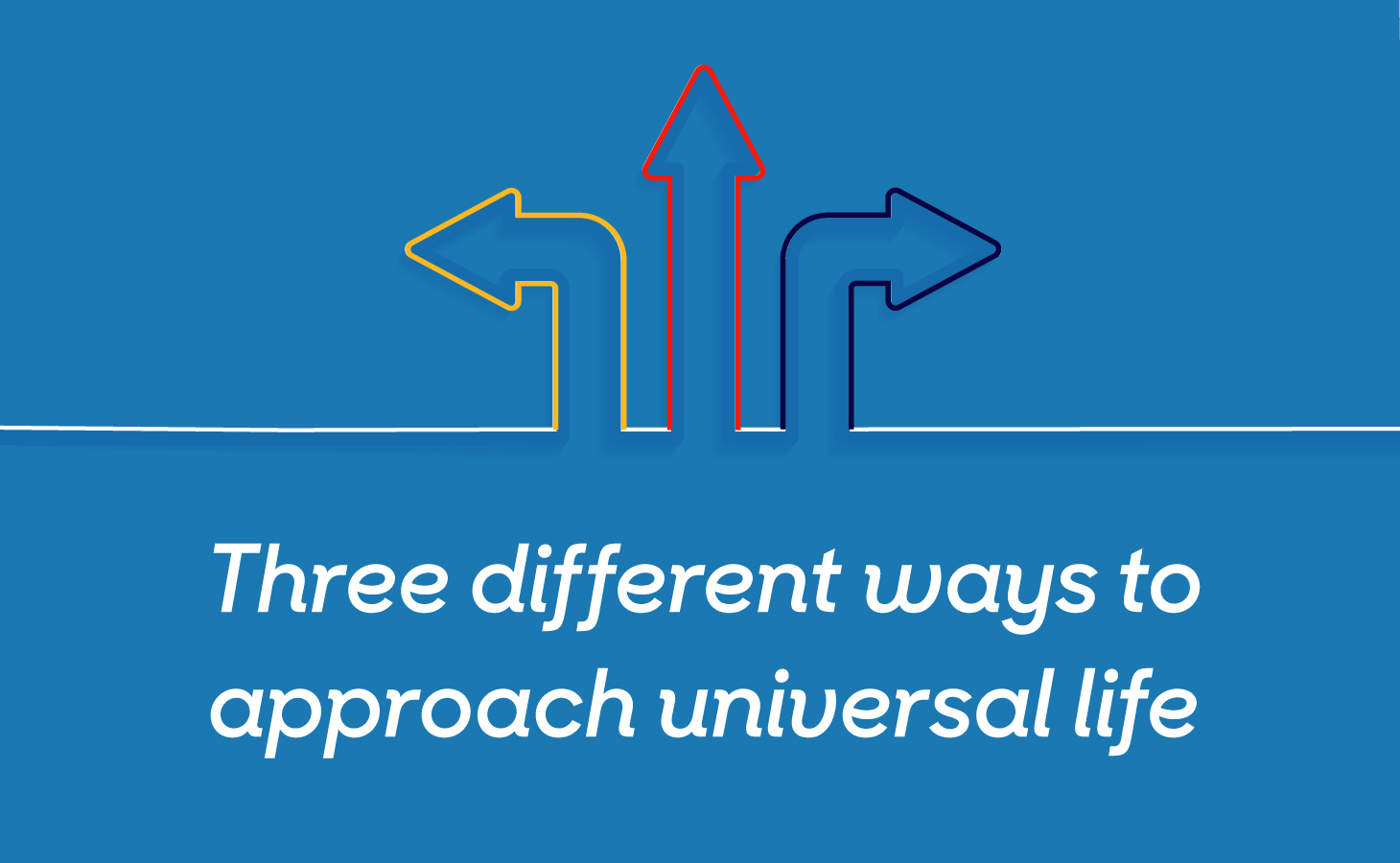Voluntary Benefits
Published by Rick Cronin on September 10th, 2021
For many of us, we’ve had the universal life insurance conversation with employers many times. We know the typical talking points with our clients. The standard pitch goes something like this: “life insurance is a valuable safety net for your employees to protect their families if they’re no longer around – it’s a cornerstone of financial health”. It’s a pitch that’s true, it’s effective, it’s meaningful and it’s also been done about a billion times before.

The talking points below aren’t necessarily new or groundbreaking. But, they may be a different way to lead the conversation. They might not be appropriate in every situation, but I’ll try to pick out a few cases where they’re particularly effective. Given the heightened awareness in September around life insurance, it’s the perfect time to look at some ways to freshen up the conversation.
The long-term care angle
Long-term care is a looming crisis for America. The number of people that will need care, the costs of care and the limited options for financial support are all coming together in a way that’s a huge concern. Not to mention, one that should be on an employer’s radar. On top of that, awareness of the issue is on the rise, since today, many employees are providing care for a loved one.
Of course, long-term care benefits aren’t available on all universal life products, but if they’re an option, leading with long-term care benefits can be an incredibly effective approach. It’s one we use all the time here at Trustmark to help employers see the value of universal life insurance. Especially in cases where employers have seen lots of their employees become caregivers, leading with long-term care pays dividends for brokers, employers and employees.
Universal Life as an investment
Universal life builds cash value. And, typically, we use that cash value to keep premiums level as the cost of insurance increases in later years. We don’t encourage use of the cash value for a loan or withdrawal, but the truth is that IS an option for policyholders.
Consider that nearly 70 percent of Americans have less than $1000 in savings.1 A universal life policy is not intended to be used as an emergency account, but it can be. And, given the stats around many peoples’ financial wellbeing, it’s a pretty appealing perk. Especially when you’re working with an employee population that is a little lower on the income scale, the knowledge that they can use it as a financial fallback if needed can help put employee minds at ease about the cost of paying for a voluntary universal life policy.
The guarantee
Look, no one likes to talk bluntly about the grim truth about life insurance: it pays you when you die. But, it’s an important point. With most insurance, it’s there in case you need it. You hope you never will need it and there’s a chance you might not. You might never have a car accident, it’s possible your home doesn’t get damage or you may stay relatively healthy – in which case, you don’t see as much value from your coverage. In the case of life insurance, you know you’re going to use it. It’s not the happiest of subjects, but it’s true.
If you run into a particularly skeptical employee population, it can be an effective approach to help employers see value. Lean on the fact that, unlike other insurance, life insurance is one that’s guaranteed to pay as long as the policy stays in effect.
September is the perfect time to raise awareness on life insurance which means it’s the perfect time to brush up on new tactics and approaches. With these slightly different approaches, you should have a better toolset to help employers and their employees.
1 “Survey: 69% of Americans Have Less than $1,000 in savings”. GoBankingRates.

The talking points below aren’t necessarily new or groundbreaking. But, they may be a different way to lead the conversation. They might not be appropriate in every situation, but I’ll try to pick out a few cases where they’re particularly effective. Given the heightened awareness in September around life insurance, it’s the perfect time to look at some ways to freshen up the conversation.
The long-term care angle
Long-term care is a looming crisis for America. The number of people that will need care, the costs of care and the limited options for financial support are all coming together in a way that’s a huge concern. Not to mention, one that should be on an employer’s radar. On top of that, awareness of the issue is on the rise, since today, many employees are providing care for a loved one.
Of course, long-term care benefits aren’t available on all universal life products, but if they’re an option, leading with long-term care benefits can be an incredibly effective approach. It’s one we use all the time here at Trustmark to help employers see the value of universal life insurance. Especially in cases where employers have seen lots of their employees become caregivers, leading with long-term care pays dividends for brokers, employers and employees.
Universal Life as an investment
Universal life builds cash value. And, typically, we use that cash value to keep premiums level as the cost of insurance increases in later years. We don’t encourage use of the cash value for a loan or withdrawal, but the truth is that IS an option for policyholders.
Consider that nearly 70 percent of Americans have less than $1000 in savings.1 A universal life policy is not intended to be used as an emergency account, but it can be. And, given the stats around many peoples’ financial wellbeing, it’s a pretty appealing perk. Especially when you’re working with an employee population that is a little lower on the income scale, the knowledge that they can use it as a financial fallback if needed can help put employee minds at ease about the cost of paying for a voluntary universal life policy.
The guarantee
Look, no one likes to talk bluntly about the grim truth about life insurance: it pays you when you die. But, it’s an important point. With most insurance, it’s there in case you need it. You hope you never will need it and there’s a chance you might not. You might never have a car accident, it’s possible your home doesn’t get damage or you may stay relatively healthy – in which case, you don’t see as much value from your coverage. In the case of life insurance, you know you’re going to use it. It’s not the happiest of subjects, but it’s true.
If you run into a particularly skeptical employee population, it can be an effective approach to help employers see value. Lean on the fact that, unlike other insurance, life insurance is one that’s guaranteed to pay as long as the policy stays in effect.
September is the perfect time to raise awareness on life insurance which means it’s the perfect time to brush up on new tactics and approaches. With these slightly different approaches, you should have a better toolset to help employers and their employees.
1 “Survey: 69% of Americans Have Less than $1,000 in savings”. GoBankingRates.
